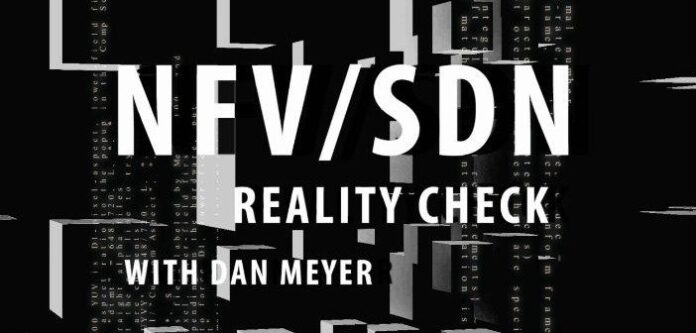On this week’s NFV/SDN Reality Check, we look at using SDN to control workload placement with greater mobility and ROI models
This week’s featured interview is with Cirba where we discuss the use of SDN to control workload placement with greater mobility, hidden benefits of SDN and how to get that all-important return on investment from SDN deployments.
First, let’s take a look at some top headlines from across the space over the past week.
Speaking at an investor conference this week, AT&T CEO Ralph de la Vega provided some financial insight into how the company is looking to transform revenue generation through its SDN, NFV and cloud efforts. De la Vega noted the company’s plans have allowed it to reduce the capital expense and operating expense needed to run its operations.
In addition, the move is also pushing revenue generation by allowing AT&T to turn up new services almost instantaneously. Citing AT&T’s Network On Demand platform as an example, de la Vega noted that the company was able to roll the platform across the country in weeks. As an example of the service, de la Vega said companies taking advantage of the platform are able to alter their network speed in less than 90 seconds.
De la Vega also hinted that AT&T later this year plans on rolling out an SDN-based service across 63 countries simultaneously.
As for the impact the move toward virtualized network platforms is having on AT&T’s bottom line, de la Vega said the carrier has done quite a bit to close the margin gap compared with legacy systems.
Also this week, the European Telecommunications Standards Institute said its Open Source MANO initiative rolled out its Release 0 code package, which it claims integrates seed code supplied by Telefónica, Rift.io, Cononical and other vendors. ETSI said the release happened one month ahead of schedule.
The organization said the initiative is closely aligned with the evolution of ETSI NFV and it plans to provide a “regularly updated reference implementation of NFV MANO.”
Moving forward, ETSI said it expects Release 1 to be unveiled within six months, and is to include plans to extend current multivirtualized infrastructure manager and multisite support; and include additions to service modeling and enhanced platform aware resource allocation. The MANO release is currently available via ETSI for download.
For this week’s featured interview, we spoke with Andrew Hillier, CTO and co-founder of Cirba. Before diving into the company’s view on using SDN to control workload placement with greater mobility, hidden benefits of SDN and how to get that all-important return on investment from SDN deployments, Hillier provided a brief overview of the company as well as its view on the current development and deployment pace of SDN.
That will do it for this week’s show. Make sure to check us out again next week when we are scheduled to speak with Rift.io on the importance of open source NFV for management and network orchestration.
Bored? Why not follow me on Twitter

